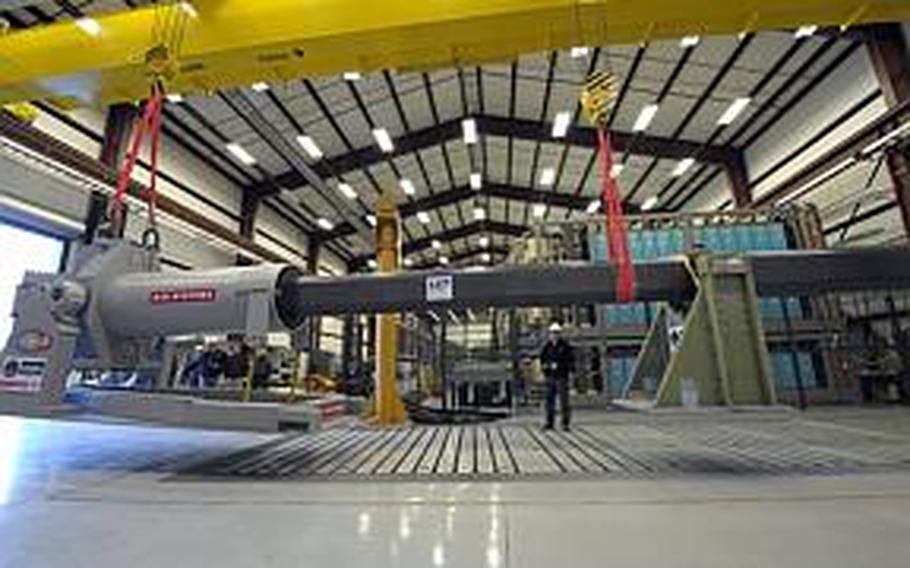
Gary Bass, of the Naval Surface Warfare Center in Dahlgren, Va., uses a crane to maneuver a 32-MJ version of the electromagnetic railgun prototype into place for testing. The railgun may someday be used to launch projectiles off ships at speeds over 5,000 mph. (John F. Williams/U.S. Navy)
YOKOSUKA NAVAL BASE, Japan — The Navy is a small step closer to developing a shipborne electromagnetic railgun that could one day strike targets hundreds of miles away in less than six minutes.
Researchers will soon test the first industrially made prototype of the railgun, which uses magnetic fields instead of chemicals to launch projectiles at speeds ranging from 4,500 mph to 5,600 mph, the Office of Naval Research announced Monday.
Program managers say the industrial prototype represents a step beyond the Navy laboratory-made model that set records in December 2010, when it fired using 33 megajoules of energy, or enough electricity to launch a projectile 100 nautical miles.
One megajoule of energy is equivalent to a 1-ton car traveling at 100 mph.
The prototype’s delivery and development also demonstrate something equally important as its scientific advances — its resiliency to budget cuts.
In October, Chief of Naval Operations Adm. Jonathan Greenert told Stars and Stripes that future weapons systems would be on the chopping block, as the Navy followed a Pentagon mandate to curtail spending.
“There are some technology investments that we have out there in future systems that have too high a risk technologically, that I’m not certain — in fact, that I know — we’re going to have to defer,” Greenert said at the time. “We can’t afford the luxury of continuing to subsidize that development.”
Greenert did not specifically refer to the railgun, but it was clearly in the crosshairs; the Senate Armed Services Committee had voted to terminate the project.
A budget deal struck with the House in December saved it, under the condition that the Navy provide a report to Congress on the system within six months.
The program has cost more than $200 million since its inception in 2005, according to Senate reports.
On Jan. 30, Naval Sea Systems Command awarded Raytheon, BAE Systems and General Atomics a $10 million contract to develop a pulsed power system that could be used for the railgun and other future systems.
If developed on schedule, the power system would allow the railgun to fire six to 10 rounds per minute at a range of 200 nautical miles by 2017, according to Office of Naval Research estimates.
At that rate, the weapon would become useful in targeting not only ships and land targets, but enemy cruise and ballistic missiles.
In January, the U.S. noted the “proliferation of ballistic missiles” as a particular concern in a strategic document signed by both President Barack Obama and Defense Secretary Leon Panetta.
Researchers and engineers must still overcome multiple challenges before the railgun is ready for combat. The intense heat caused by the electricity as its forms the magnetic fields degrades the metal gun rails and poses potential risks to its operators.
The Navy estimates that the weapon would be ready sometime between 2020 and 2025, barring any future budget cuts.